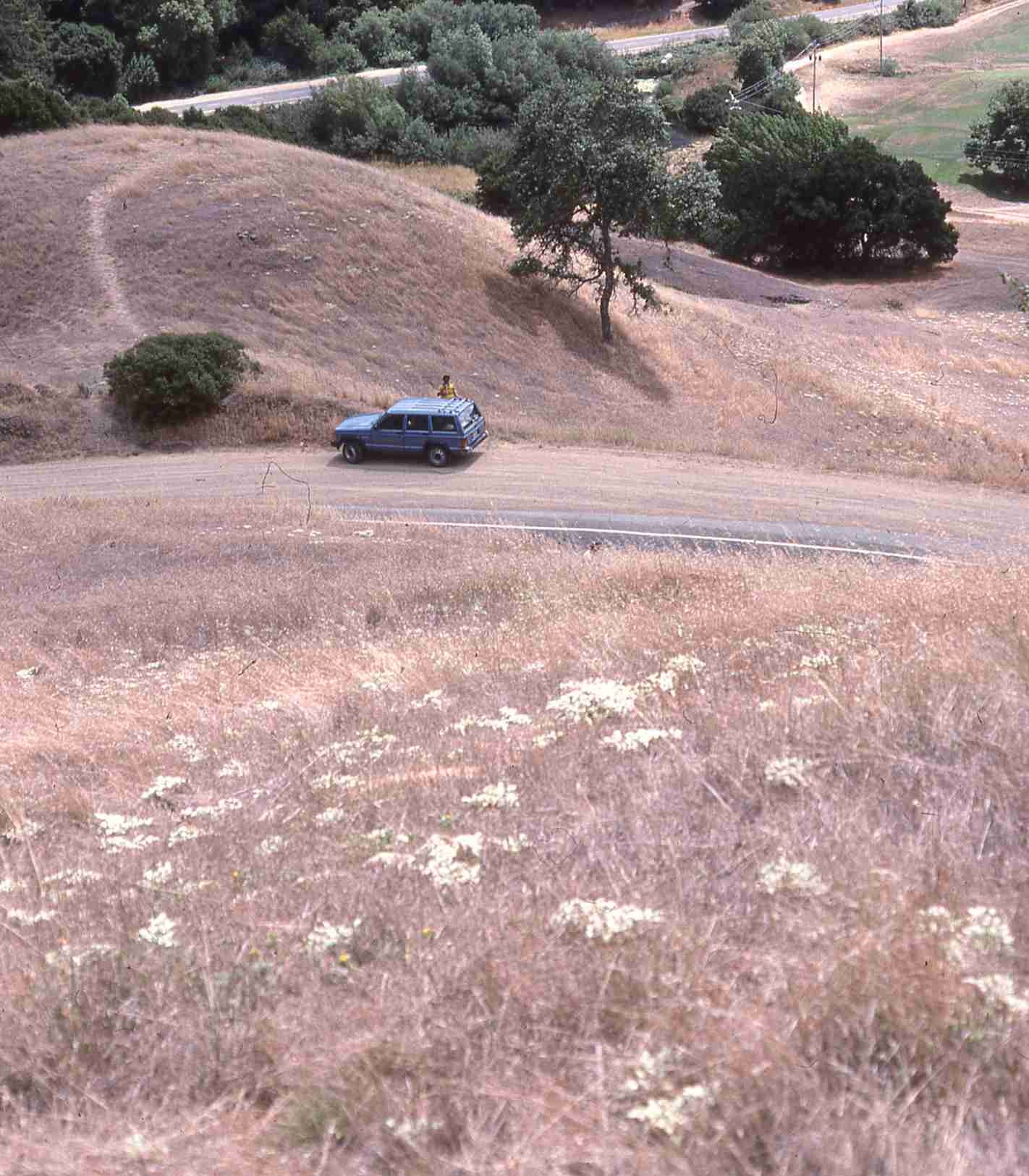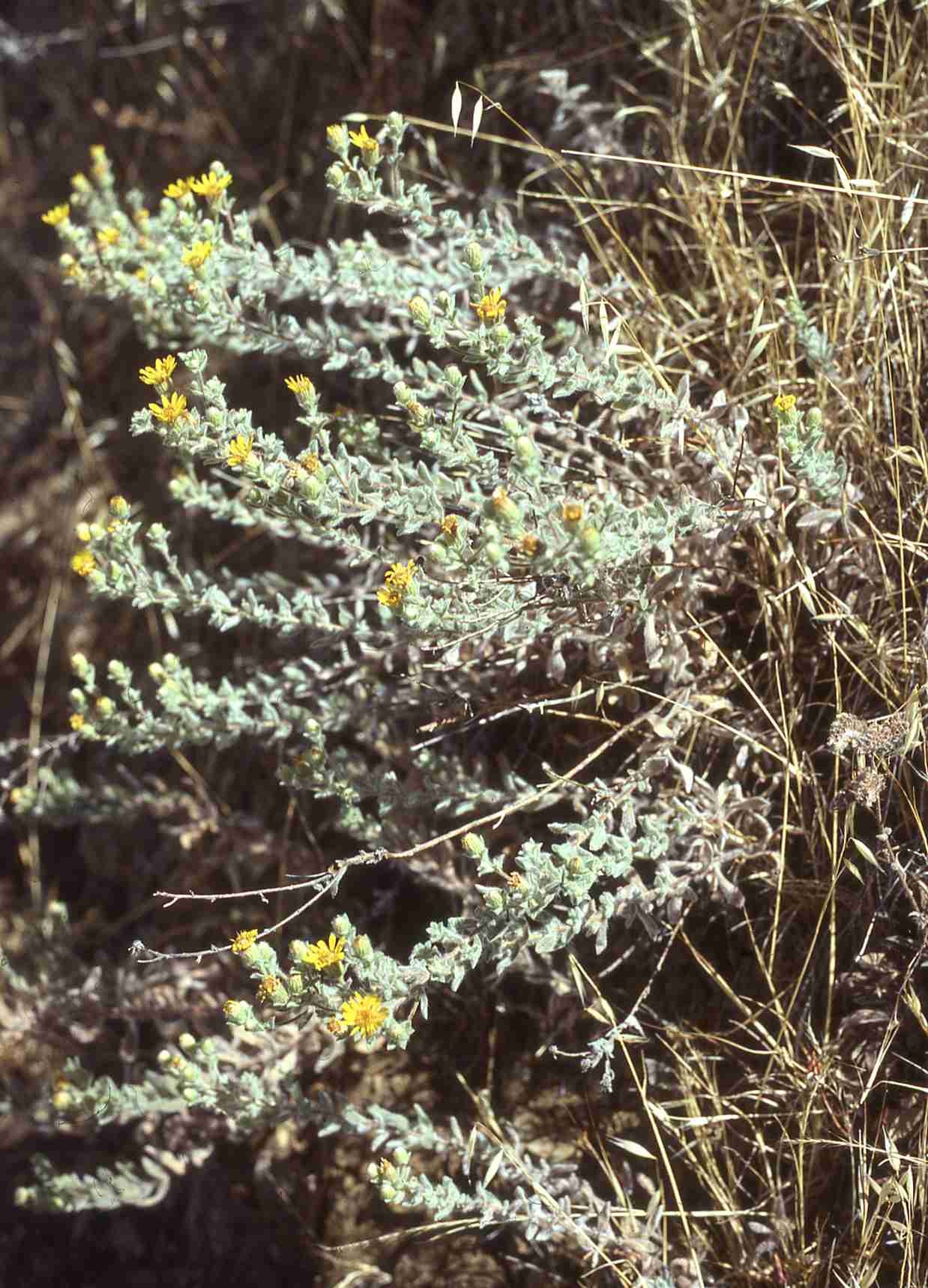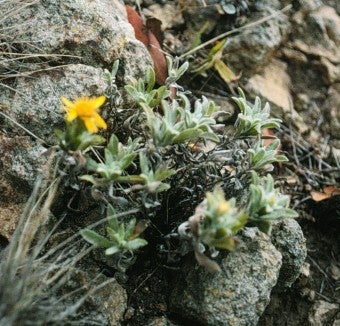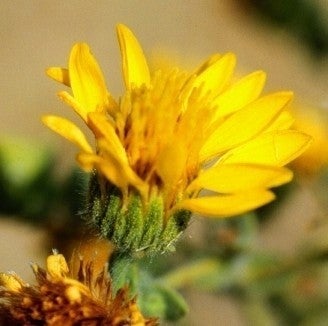Heterotheca sessiliflora var. bolanderioides Semple is serpentine soil endemic to the hill tops around San Francisco Bay. It is a member of subsp. echioides and is the only tetraploid (2n=36) taxon in the species.
Nesom (1997) treated it as a variety: Het. echioides (Benth.) Shinners var. bolanderioides (Semple) Nesom.

Last revised 2 May 2025 by J.C. Semple
© 2025 J.C. Semple, including all photographs unless otherwise indicated
1-4. Heterotheca sessilifolia var. bolanderioides. 1. Habitat, Semple et al. 9333, Marin Co., California. 2. Robust plant, Semple et al. 5670, Santa Cruz Co., California. 3. Small plant, Semple et al. 9339, Contra Costa Co., California. 4. Head, Semple & Chmielewski 8919, Santa Clara Co., California.







